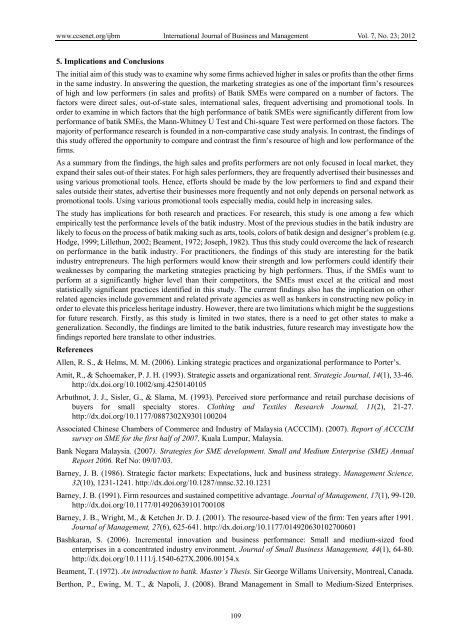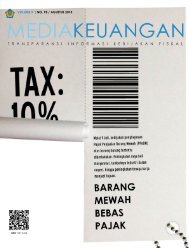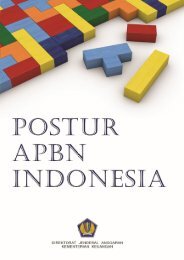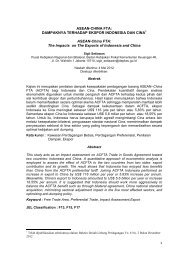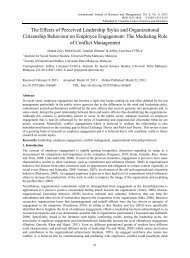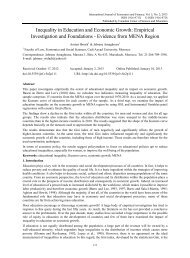Marketing%20Strategies%20and%20the%20Difference%20Level%20of%20Sales%20and%20Profits
Marketing%20Strategies%20and%20the%20Difference%20Level%20of%20Sales%20and%20Profits
Marketing%20Strategies%20and%20the%20Difference%20Level%20of%20Sales%20and%20Profits
Create successful ePaper yourself
Turn your PDF publications into a flip-book with our unique Google optimized e-Paper software.
www.ccsenet.org/ijbm International Journal of Business and Management Vol. 7, No. 23; 2012<br />
5. Implications and Conclusions<br />
The initial aim of this study was to examine why some firms achieved higher in sales or profits than the other firms<br />
in the same industry. In answering the question, the marketing strategies as one of the important firm’s resources<br />
of high and low performers (in sales and profits) of Batik SMEs were compared on a number of factors. The<br />
factors were direct sales, out-of-state sales, international sales, frequent advertising and promotional tools. In<br />
order to examine in which factors that the high performance of batik SMEs were significantly different from low<br />
performance of batik SMEs, the Mann-Whitney U Test and Chi-square Test were performed on those factors. The<br />
majority of performance research is founded in a non-comparative case study analysis. In contrast, the findings of<br />
this study offered the opportunity to compare and contrast the firm’s resource of high and low performance of the<br />
firms.<br />
As a summary from the findings, the high sales and profits performers are not only focused in local market, they<br />
expand their sales out-of their states. For high sales performers, they are frequently advertised their businesses and<br />
using various promotional tools. Hence, efforts should be made by the low performers to find and expand their<br />
sales outside their states, advertise their businesses more frequently and not only depends on personal network as<br />
promotional tools. Using various promotional tools especially media, could help in increasing sales.<br />
The study has implications for both research and practices. For research, this study is one among a few which<br />
empirically test the performance levels of the batik industry. Most of the previous studies in the batik industry are<br />
likely to focus on the process of batik making such as arts, tools, colors of batik design and designer’s problem (e.g.<br />
Hodge, 1999; Lillethun, 2002; Beament, 1972; Joseph, 1982). Thus this study could overcome the lack of research<br />
on performance in the batik industry. For practitioners, the findings of this study are interesting for the batik<br />
industry entrepreneurs. The high performers would know their strength and low performers could identify their<br />
weaknesses by comparing the marketing strategies practicing by high performers. Thus, if the SMEs want to<br />
perform at a significantly higher level than their competitors, the SMEs must excel at the critical and most<br />
statistically significant practices identified in this study. The current findings also has the implication on other<br />
related agencies include government and related private agencies as well as bankers in constructing new policy in<br />
order to elevate this priceless heritage industry. However, there are two limitations which might be the suggestions<br />
for future research. Firstly, as this study is limited in two states, there is a need to get other states to make a<br />
generalization. Secondly, the findings are limited to the batik industries, future research may investigate how the<br />
findings reported here translate to other industries.<br />
References<br />
Allen, R. S., & Helms, M. M. (2006). Linking strategic practices and organizational performance to Porter’s.<br />
Amit, R., & Schoemaker, P. J. H. (1993). Strategic assets and organizational rent. Strategic Journal, 14(1), 33-46.<br />
http://dx.doi.org/10.1002/smj.4250140105<br />
Arbuthnot, J. J., Sisler, G., & Slama, M. (1993). Perceived store performance and retail purchase decisions of<br />
buyers for small specialty stores. Clothing and Textiles Research Journal, 11(2), 21-27.<br />
http://dx.doi.org/10.1177/0887302X9301100204<br />
Associated Chinese Chambers of Commerce and Industry of Malaysia (ACCCIM). (2007). Report of ACCCIM<br />
survey on SME for the first half of 2007, Kuala Lumpur, Malaysia.<br />
Bank Negara Malaysia. (2007). Strategies for SME development. Small and Medium Enterprise (SME) Annual<br />
Report 2006. Ref No: 09/07/03.<br />
Barney, J. B. (1986). Strategic factor markets: Expectations, luck and business strategy. Management Science,<br />
32(10), 1231-1241. http://dx.doi.org/10.1287/mnsc.32.10.1231<br />
Barney, J. B. (1991). Firm resources and sustained competitive advantage. Journal of Management, 17(1), 99-120.<br />
http://dx.doi.org/10.1177/014920639101700108<br />
Barney, J. B., Wright, M., & Ketchen Jr. D. J. (2001). The resource-based view of the firm: Ten years after 1991.<br />
Journal of Management, 27(6), 625-641. http://dx.doi.org/10.1177/014920630102700601<br />
Bashkaran, S. (2006). Incremental innovation and business performance: Small and medium-sized food<br />
enterprises in a concentrated industry environment. Journal of Small Business Management, 44(1), 64-80.<br />
http://dx.doi.org/10.1111/j.1540-627X.2006.00154.x<br />
Beament, T. (1972). An introduction to batik. Master’s Thesis. Sir George Willams University, Montreal, Canada.<br />
Berthon, P., Ewing, M. T., & Napoli, J. (2008). Brand Management in Small to Medium-Sized Enterprises.<br />
109


